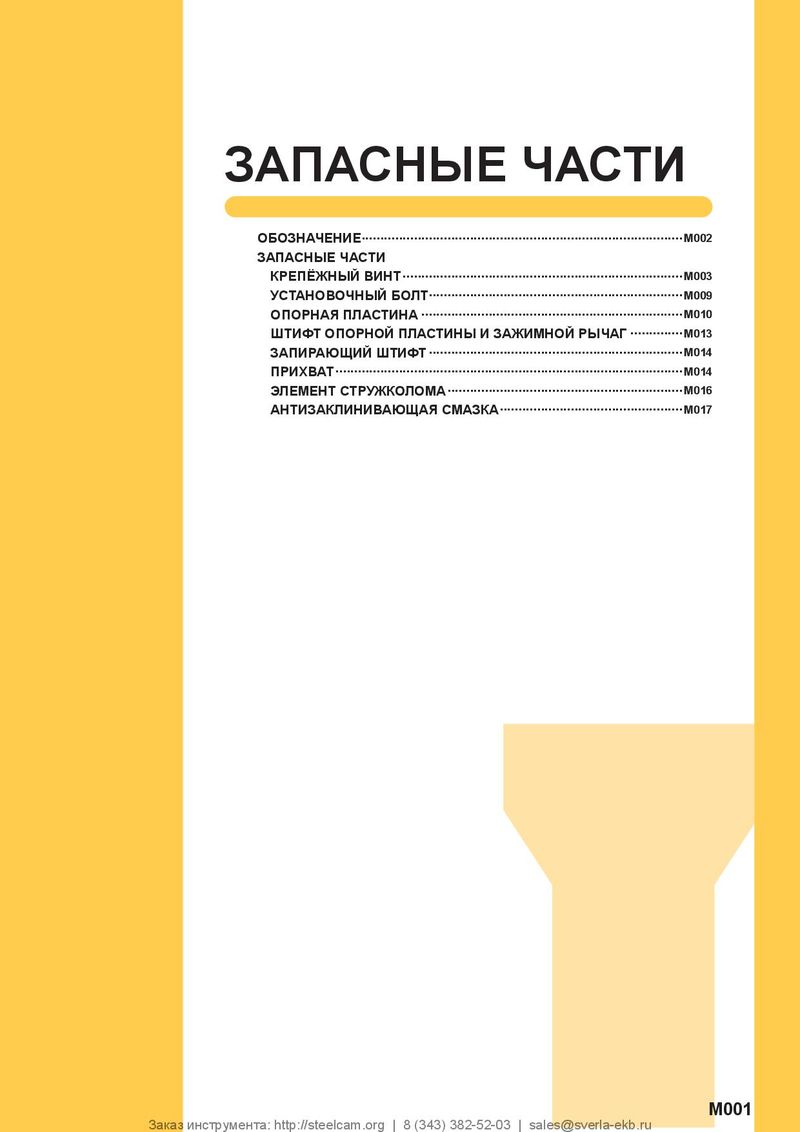Общий каталог Mitsubishi 2020 - 2021 - страница 1732
Навигация
 Каталог Mitsubishi Materials запасные части
Каталог Mitsubishi Materials запасные части Каталог Mitsubishi Materials резьбонарезной инструмент
Каталог Mitsubishi Materials резьбонарезной инструмент Каталог Mitsubishi Materials СНП с CBN и PCD для токарной обработки
Каталог Mitsubishi Materials СНП с CBN и PCD для токарной обработки Каталог Mitsubishi Materials сверлильные инструменты
Каталог Mitsubishi Materials сверлильные инструменты Каталог Mitsubishi Materials расточной инструмент
Каталог Mitsubishi Materials расточной инструмент Каталог Mitsubishi Materials пластины для точения
Каталог Mitsubishi Materials пластины для точения 
EXTERNALINTERNALFeatures AdvantagesDisadvantages TECHNICAL DATA THREADING METHODS THREADING METHODS Right Hand Thread Left Hand Thread *change the shim *change the shim · Usually, threads are cut feeding the insert towards the chuck. · When machining left hand threads, note that clamping rigidity is lowered due the application of back turning. · When machining left hand threads, the lead angle is negative. Ensure an appropriate lead angle by changing the shim. INSERT TYPES Partial Form Full Form Semi Full Form (Trapezoidal threads only) a The same insert can be used for a range of pitches. a No deburring needed after threading. a No de-burring needed after threading. a Shorter tool life because the nose radius of the a Requires specific insert for each thread a Requires specific insert for each thread insert is smaller than that of a full form insert. form and pitch. form and pitch. a Finishing with another operation may be necessary. a Finishing with another operation may be necessary. Crest Radius Crest Radius Crest Radius (Additional turning necessary to finish the thread crest.) (Finished by insert form.) (Additional turning necessary to finish the thread crest.) Finished Finished Surface Surface Finished Surface Pre-finished Surface Pre-finished Surface Finishingallowance Pre-finishedSurface Feed Direction Insert Feed Direction Insert Feed Direction Insert INFEED METHODS 1°─ 5° Radial Infeed Flank Infeed Modified Flank Infeed Incremental Infeed a Easiest to use. a Relatively easy to use. a Preventing flank wear on the a Uniform wear of the right and (Standard program for (Semi-standard program for right side of the cutting edge. left sides of the cutting edge. threading) threading.) a Reduced cutting force. a Reduced cutting force. a Wide application. (Cutting a Reduced cutting force. a Good for large pitch or a Good for large pitch or conditions easy to change.) a Suitable for large pitch materials that peel easily. materials that peel easily. a Uniform wear of the right and threads or materials that a Good chip discharge. left sides of the cutting edge. peel easily. a Good chip discharge. a Difficult chip control. a Large flank wear of the right a Complex machining a Complex machining P a Subject to vibration in the later side of a cutting edge. programming. programming. passes due to long cutting edge a Relatively difficult to change a Difficult to change cutting a Difficult to change cutting in contact with work material. cutting depth. depth. (NC programming depth. (Re-programming a Ineffective for large pitch (Re-programming necessary) necessary) threading. necessary) a Chip control is difficult. a Heavy load on the nose radius. P017